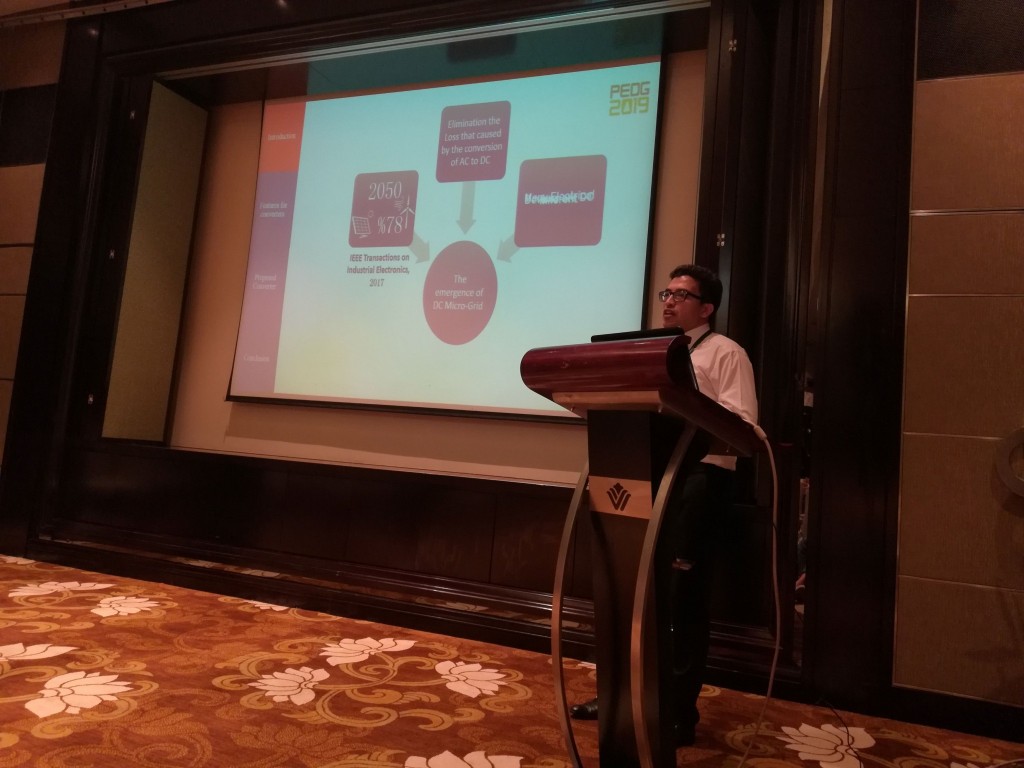Mr. Rahim Samanbahksh has presented his research in 2019 IEEE 10th International Symposium on Power Electronics for Distributed Generation Systems (PEDG), Xi’an, China in 3-6 June 2019.
He presented two conference papers: “A Novel Non-Coupled Non-Isolated Double-Input Bidirectional High-Gain Converter for Hybrid Energy Storage System” and “High Frequency Transformer Design for Specific Static Magnetising and Leakage Inductances Using Combination of Multi-Layer Perceptron Neural Networks and FEM Simulations”.

In the first one, “A Novel Non-Coupled Non-Isolated Double-Input Bidirectional High-Gain Converter for Hybrid Energy Storage System”, he proposed a method and a converter for combining supercapacitors and batteries in order to deliver or abosrb energy to a DC grid at higher voltage.
Abstract:
In this paper, a novel non-coupled non-isolated double-input bidirectional high-gain converter is proposed for integrating hybrid energy storage systems (HESS) to DC micro-grids. The converter does not use the traditional techniques such as coupled-inductor or multi-winding transformer to achieve high-gain, hence problems such as voltage spikes or circulating currents are not present. It also has the ability of charging and discharging battery and supercapacitor independently. Moreover, it only utilizes six switches, which is less than its counterparts use. In addition, unlike other high gain converters it uses only three active switches in every mode, so conduction losses are decreased by a steep rate. The steady-state analysis of proposed converter is presented, to validate the analysis, detailed PSPICE simulations were carried out for calculating the precise gain of converter and power losses in several cases. Finally, a lab prototype of the converter is constructed, and experimental results are presented.
The second one is focused on the design of a transformer for DC/DC converters such as resonant and dual active bridge converters.
Abstract:
Power industry is evolving toward high density power and therefore high frequency applications. Converters with low switching losses based on soft switching have been developed. In many of these converters, the transformers that are used, should have tuned magnetizing and leakage inductances. Hence, more accurate design methodologies should be developed. In this paper air-gap, winding overlap coefficient and core geometry are used for designing high frequency transformer with desired magnetizing and leakage inductances. Core geometry is a concept that is used by manufactures to select cores based on their power-handling capability. In this paper, instead of using complex analytical methods or time consuming and expensive FEM simulations, a methodology is proposed that uses few FEM simulations and multi-layer perceptron neural networks for designing specific magnetizing and leakage inductances, for a wide selection of cores. Moreover, the effect of core geometry on magnetizing and leakage inductances is explored. Detailed 3D-FEM simulations confirm the validity of proposed methodology. In addition, a prototype was tested and experimental results are consistent with Neural-network results.
